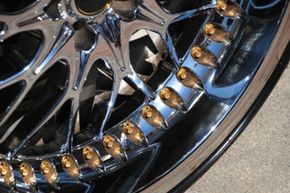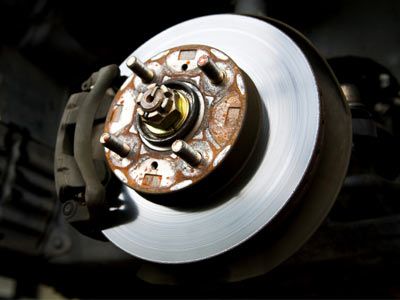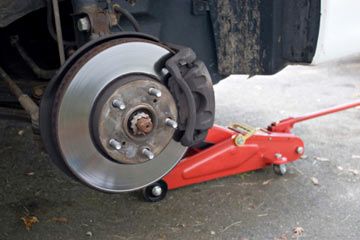Whether you're looking to purchase a high-end car or just dig chrome dubs and alloy mags, chances are you've heard the buzz about brake dust covers -- plates, typically aluminum, sandwiched between the brake disc and rims -- and the protection they supposedly provide your wheels' fancy finish; but do they actually work?
Before we get to that, let's briefly review how disc brakes work to better understand the icky issue they claim to clean up.
Advertisement
Disc brakes slow your car via the friction caused by clamping brake pads onto a rotor -- a disc attached to the wheel and axle. The friction-generating material coating these pads gradually grinds off and some of this dust deposits on your gleaming chrome rims. This is normal; it doesn't signify a breakdown or abnormal lessening of lifespan [source: Jensen].
In other words, brake dust covers aren't for correcting a mechanical defect, but an aesthetic one.
Dark brake dust buildup turns shiny rims shabby -- some say it also wreaks havoc on their finish. Brake dust covers purportedly impede this grime from making it to the wheel, decreasing damage and saving your spinners. If true, dust covers would also cut down on the manual cleaning -- a dirty, and sometimes dangerous duty that can mean managing toxic materials, including asbestos.
Do they work? The answer remains muddier than a set of Range Rover rims after a weekend at Vermonster. Some say they do and some say they don't, while still others are clearly wary of any aftermarket accessory, so consult a mechanic you trust and consider the following issues before you buy:
- Expense: Brake dust covers run $30 to $40 per pair, with scant market competition to drive prices down
- Looks: Covers block the view of your brakes, hiding any snazzy anodized or painted calipers you might have
- Performance: Most covers feature air slots to allow air-cooling but performance drivers might want to test their actual performance at high speeds
If dust covers aren't for you, you can also try switching to Kevlar or ceramic brakes, which kick out less dust but may be rougher on your rotors [source: Wolf].
Dust covers are increasingly becoming standard equipment on many makes and models. And if you're purchasing them as aftermarket accessories, they install with little trouble -- simply remove your wheel, fit the cover against the inside surface and replace the wheel. Front wheels generate the most dust, so start there before committing the cash to cover the rear wheels. And don't forget to contact your dealer if you have concerns about violating your car's warranty.
For more information about brakes and other related topics, follow the links on the next page.
Advertisement



